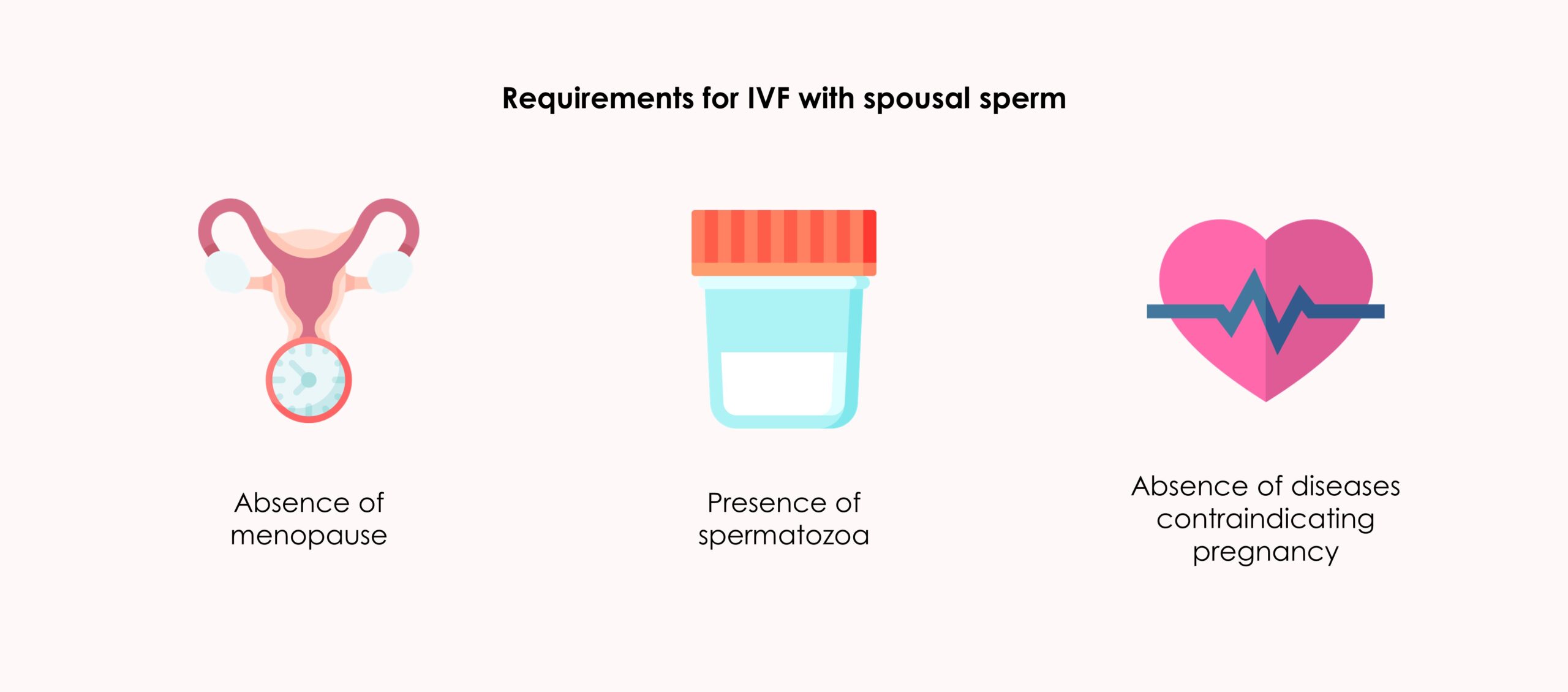After the couple's fertility study, the gynaecologist specialised in assisted reproduction may recommend IVF treatment with conjugal sperm. Doubts arise about the steps involved in conjugal IVF and the duration of the treatment.
In vitro fertilisation with partner sperm
In vitro fertilisation (IVF) with partner's sperm is an assisted reproductive technique by which heterosexual couples can fulfil their dream of parenthood. IVF with partner sperm begins with cycle scheduling, i.e. setting the dates for starting IVF.
The first thing that is done is a basal ultrasound, between the first and third day of menstruation. Although there are several ovarian stimulation protocols, the most commonly used start with menstruation. This ultrasound will verify that there is no problem that would make it necessary to delay the treatment cycle (ovarian cysts, endometrial polyps, etc.).
Requirements for IVF with in vitro fertilisation with partner sperm
There are few requirements that patients must meet in order to be able to perform IVF with partner sperm:
- Absence of menopause: in order to be able to perform IVF with partner sperm, we need the ovaries to produce at least one follicle per month. When we reach the menopausal stage, the ovarian reserve is depleted and, therefore, this type of treatment cannot be carried out, but it would be necessary to resort to IVF with egg donation, for example.
- Presence of sperm: either in ejaculate or by testicular biopsy.

In general, the absence of diseases that contraindicate pregnancy under any circumstances.
Process for IVF with partner's sperm
In vitro fertilisation with conjugal sperm can be summarised in the following stages. It should be noted that the treatments are individualised, so there may be variations in the IVF procedure described, depending on the case:
Ovarian stimulation
The hormone treatment lasts about 10-12 days, during which time the patient must administer daily subcutaneous medication.
Ovarian puncture
The ovarian puncture is scheduled 35-38 hours after the administration of HCG. The patient must fast from solids and liquids for the previous 8 hours. The procedure is performed vaginally, under sedation and lasts about 15 minutes.

Semen sample
The couple must provide a sperm sample. In cases where the male partner may have difficulty in obtaining the sample, a semen sample can be left for freezing the previous days.
Laboratory
On the day of the ovarian puncture, the oocytes are fertilised, either by classic in vitro fertilisation (an egg is placed with 25-50,000 capacitated spermatozoa) or IVF-ICSI (introduction of a spermatozoa into the egg with the help of a micro-needle).
After fertilisation, the embryos are cultured. The embryos remain in the laboratory for a few days until the best moment for embryo transfer is determined (day +3 or day +5 or blastocyst).
Embryo transfer
The embryo transfer is carried out 2 to 6 days after the puncture, although ideally on day 5. There are certain cases in which the transfer cannot be carried out at this time, which is known as a delayed cycle. Finally, the pregnancy test is carried out with a blood test 10-12 days after the transfer.
Pregnancy rate of spousal IVF
The pregnancy rate of an IVF treatment is age-dependent. The pregnancy rate with spousal IVF after transfer of a single embryo is approximately 55%.
However, the age of the patient must be taken into account when informing about the chances of pregnancy. In patients under 35 years of age, the success rate of IVF with partner sperm is 76%, while in patients over 42 years of age it drops to 24%.
At Ginemed, more than half of our patients achieve pregnancy in the first embryo transfer.





No hay comentarios